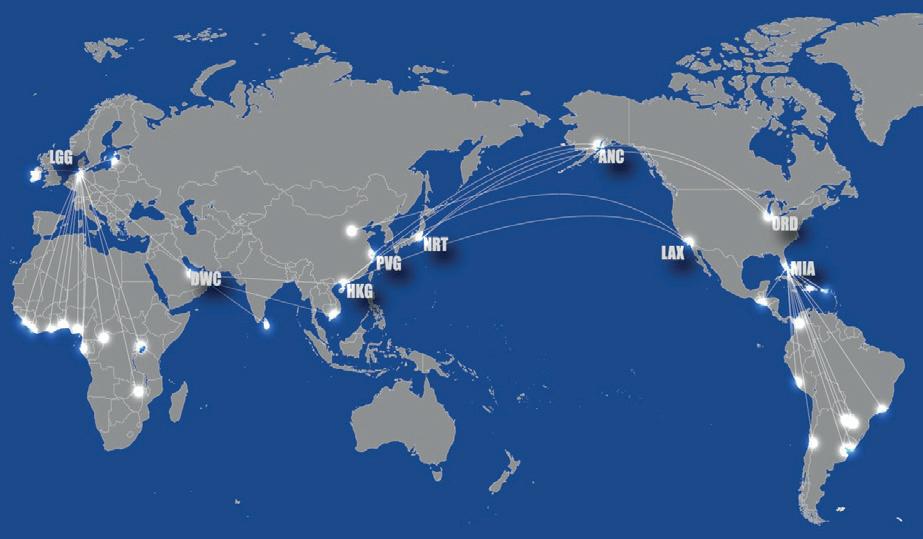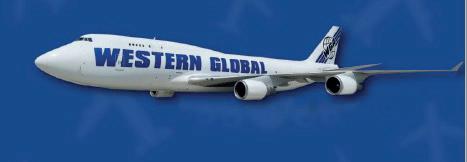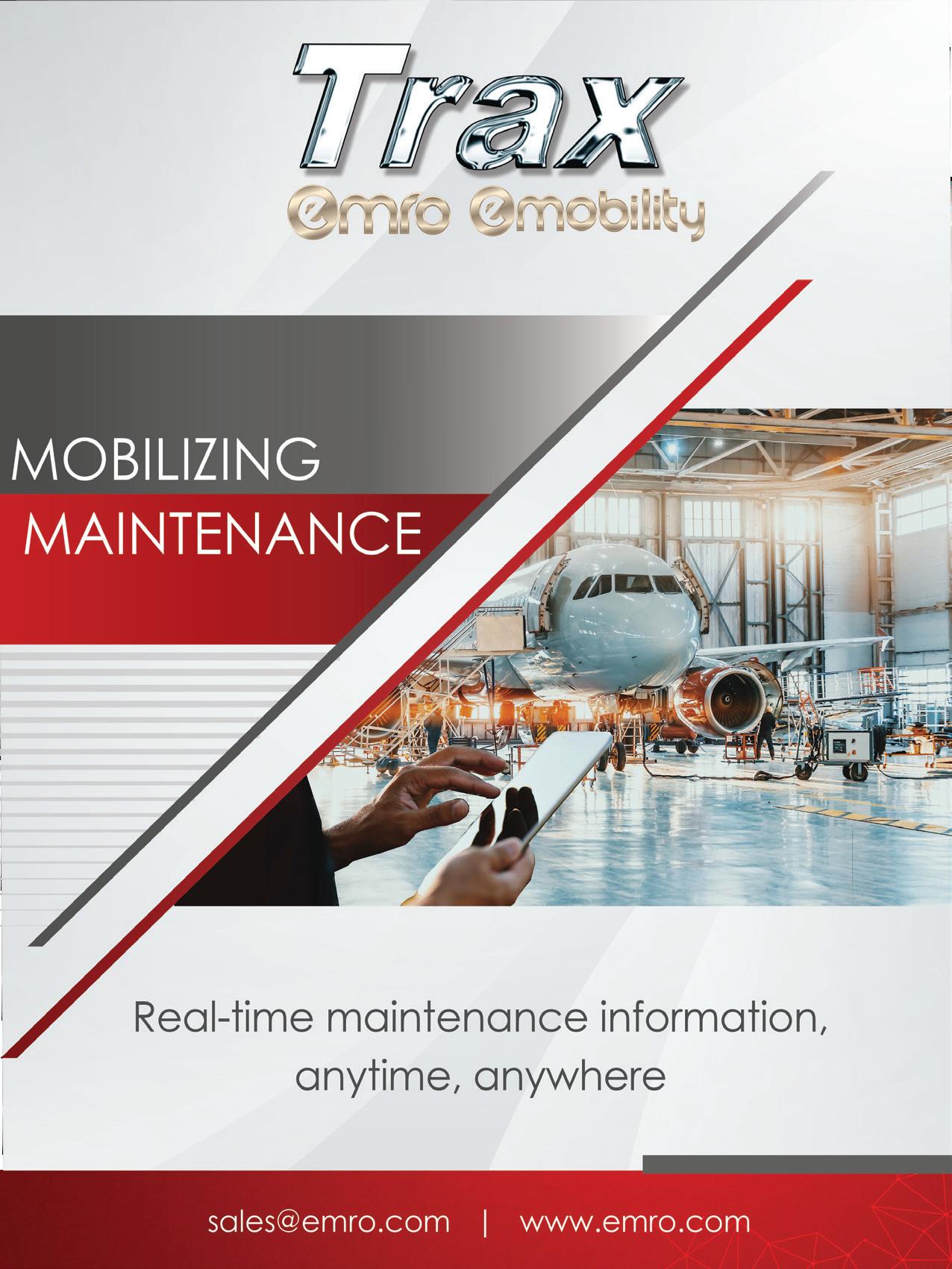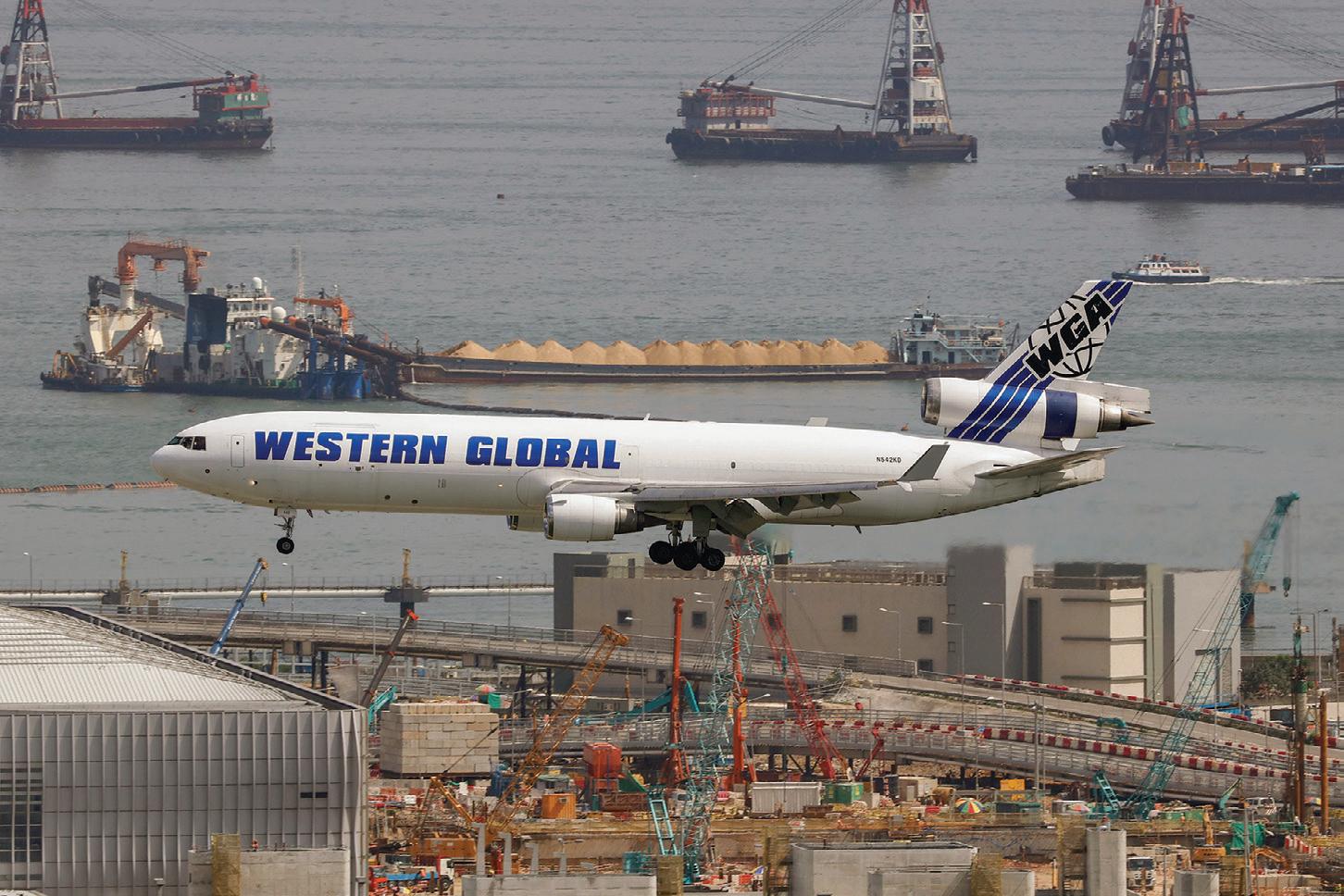
14 minute read
CASE STUDY: Improving resource utilization and efficiency at Delta TechOps
maintenance organizations achieve their goals. As a company that takes pride in its MRO and aviation DNA, we have ensured that we are constantly working in step with our clients to develop platform-based solutions that can help them integrate modernization into their environments without extensive and expensive rip-and-replace products. With the resurgence in air travel, and with airlines bringing fleets back into line service, the need of the hour is rapid turn-arounds, high reliability, and extreme efficiency.
However, electronic task cards, either based on XML, overlays on top of PDF or generated on the fly, eliminate the bulk of paperwork from the hangar floor. On top of that we have the ability to deploy our records system to capture the other documents that, at least for the immediate future, will partially remain on paper. One example of these are part certificates. Our records module takes these hold out paper records and digitizes them for future easy and quick retrieval. We perform scanning, OC operations and indexing, merge and final attachment to their corresponding task cards and work packages. Documents are always accessible from web browsers and apps. This way we end up feeding in real time the airlines’ specialized digital records systems with electronic copies of all the documents as the task cards get closed and audited.
Aircraft IT: How does the EmpowerMX solution address the challenges that Delta had identified (see question 1)?
Rick: With the new processes we managed to optimize the allocation and utilization of resources. Project Managers now can reschedule resources in advance to prevent problems from surfacing or getting out of control. By standardizing work processes across facilities, bays, and customers we are ensuring work is performed in a pre-defined optimized way with better quality and clarity of status.
We have also achieved real-time visibility of operational and financial metrics. This visibility allows us to concentrate on what really requires attention and helps reveal opportunities for improvement.
Finally, Delta TechOps continues to rely on multiple legacy systems that are hard to replace as the company depends on them to control critical day-to-day operations. The solution we implemented managed to seamlessly integrate the data coming out of these systems and offer it to the Technicians in a consolidated holistic view. It has a sleek browser-based UI (user interface) offering a user-centric experience. This way they can focus better on what they are trained to do and enjoy doing — fixing airplanes. Dinakara: From our side, EmpowerMX cannot stress enough the importance we put on strengthening our partnership with customers like Delta TechOps. We look forward to continuing serving our market and helping MRO and airline
RICK UBER
Started my career as a US Marine, where discipline and integrity were instilled as core values. Those values have served me well throughout my career starting as a A&P mechanic and working my way up through the management ranks. I have had the honor to lead multiple organizations to include Aviation Repair Technologies, AAR in Indianapolis IN, TechOps Mexico and currently the Airframe Maintenance division at Delta Tech Ops.
DINAKARA NAGALLA
Dinakara Nagalla is founder and CEO of EmpowerMX, where he sets the vision and product strategy for the company. He is an aviation MRO technology veteran, having worked in large-scale implementation of MRO suites for global airlines, product development, and systems integration. He has held leadership roles at aviation software and Consulting firms including American Airlines/Sabre. He holds a graduate degree in thermal engineering, and executive leadership program from Cornell University.
DELTA AIRLINES OR DELTA TECHOPS
Delta TechOps is the full-service maintenance provider for the entire Delta Airlines fleet, numbering close to 900 aircraft. In addition to maintaining its own airplanes. The organization also provides MRO solutions and support to more than 150 third-party operators around the world, making it the largest airline MRO provider in North America.
EMPOWERMX
EmpowerMX’s cloud-based, mobile-first software-as-a-service (SaaS) solutions are used by the world’s leading airlines, MROs, and OEMs to more efficiently plan, execute, and optimize heavy maintenance, line maintenance, materials management, shops activities and component overhaul. The software drives ROI and efficiency gains by shortening maintenance turn-around times, increasing aircraft availability, and lowering cost per available seat mile.
INTERACTIVE GIVE US YOUR OPINION
CLICK HERE TO POST YOUR COMMENT
INTERACTIVE SUBSCRIBE HERE
CLICK HERE TO READ ALL FUTURE EDITIONS
Managed MRO IT as a service at Western Global Airline
Jim Buckalew, SVP Technical Operations and Technology, Western Global Airlines walks us through the new ‘A-Team’ Approach to Implementing Aerospace IT Solutions for a Changed Industry
In this article, we want to share with readers the recent implementation of Trax eMRO at Western Global Airlines. In that implementation, an internal team at Western Global was assisted by the MRO ATeam. This collaboration helped Western Global to achieve one of the fastest implementations of an MRO IT solution during one of the toughest times in our industry, and a global pandemic.
I guess we should mention that we also experienced a number of hurricanes that hit the Gulf Coast of Florida during the same period. The MRO ATeam is part of the Aerospace ATeam which has verticals in airline operations, MRO IT systems, technical services and management consulting. Several ATeam partners who contributed materially to this article and supported the implementation at
WESTERN GLOBAL AIRLINES
For those readers not familiar with Western Global, the company was formed about eight years ago and has sixteen wide-body aircraft flying an international network. What makes Western Global unique is that the operations take the aircraft all over the world (Figure 1) so they are sometimes disconnected from the technology which means that all flight mechanics and flight crews have iPads and Flyaway kits.
Western Global Airline Operations
International Wide-Body Fleet (3) 747-400BCF, (13) MD11F As we went to implement an MRO system, we of course considered the footprint and the operations plus we made some decisions around being able to work off-line, having low bandwidth connectivity and being able to update work accomplished when back to a home base. We also looked very closely at the way we distributed our inventory. Much of Western Global’s operation is driven by clients and contract customers so the inventory does get moved depending on the season and the customers that we have at the time. Also, Western Global does use each aircraft as an inventory stores’ location, so we’ll look at how we set that up in the system to follow each aircraft and, essentially, manage the Flyaway kit for inventory, allocation and all of the functionality of the technology for material management in eMRO.



THE MRO ATEAM
Cristian Santos: Partner who leads Engineering, Maintenance Program and Technical Services at the MRO ATeam
Cristian’s diverse technical experience in US-based and EASA operators complements his deep IT technology skills. At Cargolux, the largest all-cargo airline in Europe, Cristian was a systems engineer for eight years and a Trax super-user. He implemented the Trax system for the first Boeing 747-8 freighter. Cristian then attended Embry-Riddle Aeronautical University and achieved his Master’s Degree in Aviation Management. While leading the MRO ATeam Cristian ensured all OEM SGML data was loaded for multiple fleets and built the IPC and maintenance program in eMRO for Western Global.
Frank Milillo: Partner who leads the MRO group at the MRO ATeam
Frank has extended his long career in commercial aviation by joining the MRO ATeam. He held several senior leadership positions within major airline TechOps divisions, specifically line maintenance, base maintenance and quality control. Frank is currently supporting the Western Global Airlines base maintenance with
supporting the Western Global team, allowed us to move very fast with a high level of quality. It was a great achievement for the teams and the Company overall. The next phase of the managed services approach for Western Global is advancing the use the deep functionality of eMRO during an unprecedented demand period for Western Global Airlines.
Global Western TechOps and MRO ATeam implemented this new MRO IT system in the past few months and that was accomplished with a strategy around managed MRO IT as a Service (Figure 2).
specific focus on Safety, Quality, Schedule and Cost, plus closing technology gaps with the addition of the Trax eMRO solution. While leading the MRO group, the ATeam completed physical inventories and implemented full material management to control inventory, production control and task accomplishment. Frank and the WGA team have introduced efficient processes matched with the latest Trax eMRO technology.
Steve Bogie: Partner who leads Flight Operations at the Aero ATeam
Steve has over 25 years’ experience in airline Operations and Technology with tier 1 and tier 2 carriers. In the context of this article, the AeroATeam supports the broader operations picture beyond MRO with systems operations control, Flight Operations, crew management, dispatch and the broader critical functions within an airlines’ Operations IT portfolio.
A UNIQUE APPROACH, MANAGED SERVICES FOR MRO IT
As with any big project, people are the foundation of success; in this case Western Global Airlines partnered with the Aero ATeam to carry the heavy load through the eMRO implementation. What’s unique about the Western Global project is that the MRO IT Managed Services implementation and support strategy was defined well before COVID. We have to hand it to the leadership at the business for their decision to upgrade the technology with the new MRO IT managed services approach. This approach has proved to be very effective, especially since the industry and the world has really changed in response to the impact of the pandemic.
IT Managed services is common in many industries but, in aviation and, more specifically, in TechOps, sometimes we are reluctant to release control to a fully managed IT as a service approach. Modern technology has now created an environment in which we can confidently outsource to Cloud solutions, the infrastructure and platform and Software as a Service (SaaS) approach. These developments, backed by industry experienced members of the MRO ATeam
MRO IT Licensing
Cloud Hosting
Implementation
Managed MRO IT as a Service
Aircraft Commerce Virtual Conference and Expo 2020
11/18/2020
Tech Support Jim Buckalew SVP Technical Operations and Technology Jim.buckalew@westernglobal.aero C-678-772-3328
Figure 2
In summary, the approach of this project has been to outsource not only the licensing but also a full Cloud Hosting, implementation and ongoing technical support.
PHASED IMPLEMENTATION APPROACH
This article is more about the strategy for the technology but readers will know that you can take many different approaches for the implementation (figure 3). At Western Global we decided that a fast implementation through a phased approach was critical for a number of reasons. There were some solutions that were not supported; time was of the essence, of course, because of our Ops tempo and there was a need to implement the technology as soon as possible. The implementation was essentially divided into two phases.
Phase 1
This initial Phase included, as readers might imagine, some foundation building plus we went through a system assessment and selection process (figure 3); we also validated compliance, the ‘dirty fingerprint’ records and made sure that we had good data in the legacy systems. That did result in a good amount of data cleansing and pretty typical DAV (Data Analysis and Validation) and ETL (Extract, Transform, Load) exercises.
Once we’d decided to adopt the managed services approach, we looked at the technology, both the software, infrastructure and platform as a service approach and, because of the resources available at Western Global as well as the amount of effort it takes to implement an MRO IT system, we felt that pulling in some experienced people to help with this was the best approach. We worked with the MRO ATeam and through phase 1 they gave us a lot of help with sizing the project to the airline itself, with business process mapping and all of the documentation; we also had the developers building the interface and integrations needed for corporate systems.
Western Global - Business Action Teams MRO ATeam – Process Development Sessions Phased Implementation Approach
Phase I Phase II
§ System Assessment § Compliance
Validation § Data Cleansing DAV/ETL § Technology-S/I/PaaS § System Integrations § Business Process
Mapping § Inventory & Material
Management § MOC Logbook/Defect
Control, Delay/Canx § Compliance Tracking § Maintenance Training § QA Audit § Electronic Task Cards § Documentation/SRA § MRO Heavy Maintenance Process Integration § Production Control § Labor, Tooling, Materials, NRC § Engine Shop Production Management § Line Mx iPad integration § Facility Capacity and Resource Planning § Advanced Materials Management § RFID FAK Management § Ground Support Equipment


Western Global’s 160,000 sq. ft. in-house Maintenance, Repair, and Overhaul (“MRO”) facility reduces maintenance cost & fleet Rating Agency Presentation - Confidentialdowntime,improves reliability & utilization and drives profitability.
Figure 3
The second column in phase 1 (figure 3) includes, primarily, the functionalities on which we focused. The core competency of inventory and materials management was key; we undertook physical inventories of the larger stores’
INTERACTIVE Click here for full product details

Phase 2
The next phase was more complex; first building on the foundation of Phase 1, in Phase 2 we rolled out the MRO Heavy Maintenance functionality, primarily in third party MROs and our Shreveport Heavy Maintenance facility where we will be using the production control features and the resource management as well as shop functionality. We’re fortunate inasmuch as the mechanics at Western Global have iPads and so we’ll be rolling out more functionality to front-line mechanics as well as distributing iPads to the Heavy Maintenance facility to get the most out of the technology.
A number of other advanced materials management tools as well as RFID for the Flyaway kits and loading ground support equipment are on the roadmap in future phases.

MANAGED IT AS A SERVICE
The managed service strategy that was adopted at Western Global included four elements. The MRO ATeam worked with us on all of these elements and we’re comfortable with the experience of all the partners on the team.
locations in Fort Myers as well as Shreveport Louisiana at our MRO facility. Once that foundation had been started for materials, we ran several parallel workstreams with maintenance control, for defects management also managing a lot of the operational needs for delays, cancellations and Tech Services. We did break out compliance tracking which is the lion’s share of the work around engineering and records and maintenance program tracking. Another initial phase was training and quality control audit. One highlight from what we did for upgrading the maintenance program was importing the SGML Task Cards and also the Part Master for the IPC, the illustrated parts catalog was obtained in SGML format and we were able to import that into the eMRO system so we had one system of record for SGML data from Boeing. We also focused on the safety risk assessment and documentation, as a deliverable in Phase 1.
1. Licensing
The first element in the structure is licensing. Western Global relied on the MRO ATeam to be a broker of software; they understand all the tools in the industry and were able to work with the sales people of those providers in the selection process to make sure the solutions selected would be a good fit for the company. ATeam is a reseller and offers an SaaS (Software as a Service) licensing options so that users can have just one place to go to manage their licenses.
2. IT Technology Hosting and Integration
The technology hosting is a key part of the offering that Western Global chose; that is, a fully hosted AWS (Amazon Web Services) environment and that was built with Trax USA Corp. Trax also has good experience in hosting but Western Global decided to go to one supplier as the best approach. So, with the experienced AWS professionals on the MRO ATeam, we were able to build a secure environment to host the software tools needed for the MRO IT project.
3. Implementation and Management
Implementation, of course, is a big part of the project and having experience with the implementation was key. We did draw up an implementation plan that fitted the project and Western Global team very well. We used the ATeam partners who were able to leverage their experience and understand what it needed to be successful with the implementation. Lots of documentation, lots of business process mapping, lots of critical steps, of course, in training and robust testing prior to rolling-out the software.


